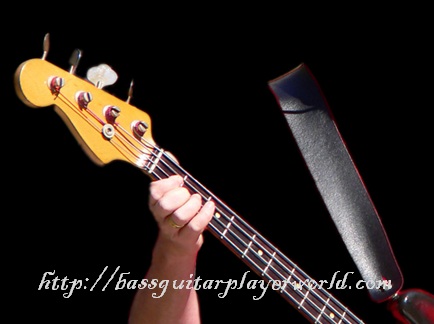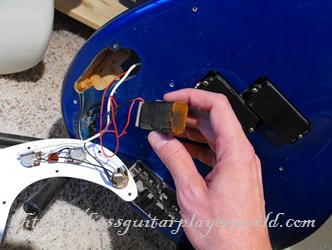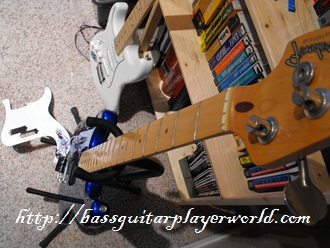3 Essential Bass Fretting Techniques
 Bass fretting can be defined as the body of your beat. Since the beats that you create require a tone pattern to follow, you should have a deep understanding on some of the essential bass fretting techniques.
Bass fretting can be defined as the body of your beat. Since the beats that you create require a tone pattern to follow, you should have a deep understanding on some of the essential bass fretting techniques.
This article will discuss some of the steps or beginner bass guitar tips that you can follow to increase the benefit that you get from fretting.
Before fretting, you should be aware of some points first. In fretting, your fingers are numbered. It starts with 1 for your index finger until you reach 4 for your pinky finger. For the next bullets, the fingers will be named in this numbering.
Some Housekeeping In Order Before You Start
In addition, for practice, ensure that your fretting hand’s nails are neatly trimmed. This will make it easier for your fingers to support the pressure on each fret that you are trying to reach. Moreover, do not stress out your hands while fretting.
The initial position should be relaxed. There might be moments were tension is needed from your hand, but most the time, it should be relaxed. With those pre-knowledge, it would be much easier to understand the following essential bass fretting techniques.
#1 – Keeping Things Close Together
For fretting, it would be better to follow the four-finger fretting technique. In this method, you can simply use all of your fretting fingers for a phrase with four frets. This is the suggested technique since it limits the movement of the whole hand. It also gives much more control, since your hand controls all of those fingers per fret.
 However, at first, this might be a difficult method. Many have complained that their fingers are not long enough to reach all the frets required. The usual solution for this problem is quite simple – more practice.
However, at first, this might be a difficult method. Many have complained that their fingers are not long enough to reach all the frets required. The usual solution for this problem is quite simple – more practice.
If you cannot do it with the frets that have bigger gaps, try the fret in the top of the neck, where the frets are more closely placed. If you really cannot proceed, try the three-finger method, and just switch to this one when you are ready.
#2 – Experiment With the Area of Contact
It will be more comfortable for you to use the pads of your finger rather than your fingertips. Although your instinct will tell you that it should be the fingertips, it would be harder if you do it that way.
Remember that your fingertips have smaller areas to support the pressure for the string. With the finger’s pad, it would be more relaxed. In addition, moving your fingertips will most likely result in pressing the wrong fret. Because of your finger pad’s bigger area, you can easily hit the correct fret. Moreover, the problem with shorter fingers will be solved this way.
#3 – Use the Goldilocks Theory
Do not press so hard. You will only make it more difficult for you to get to the next frets, Make it more natural, and your fingers will easily find the next frets to press. Let your bass amplifier do the amplifying. Your fingers are just for fretting.
To keep you working on the essential bass fretting techniques, go ahead and practice a song with fretting. Apply the tips mentioned above for you to experience the actual feel of fretting.
Transform Yourself From An Average Player Into a Competent Bassist
JamPlay has thousands of video lessons that are conveniently arranged in structured lesson sets. With high quality instructions from world renowned bassists, Jamplay is an unparalleled learning resource. Whatever your genre preferences, you’ll find something here to help you improve your current level of playing.
Related Articles
One Comment
-
I have been playing for a couple of years but i still get pain down the side of my palm down from my pinkie when i stretch across.
I also get pain in my thumb so what am i doing wrong because learn myself and don’t have a tutor.






Recent Comments